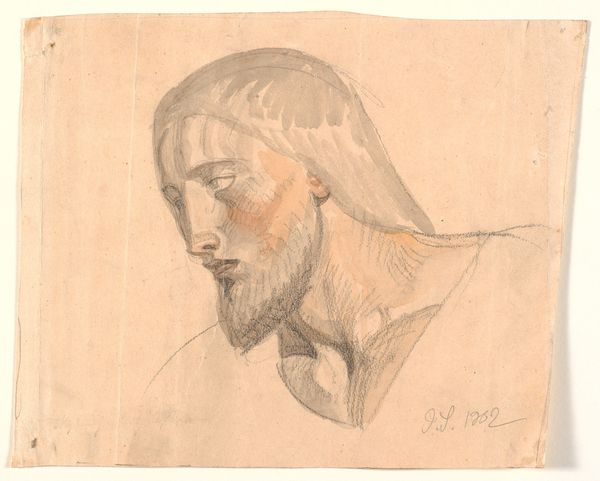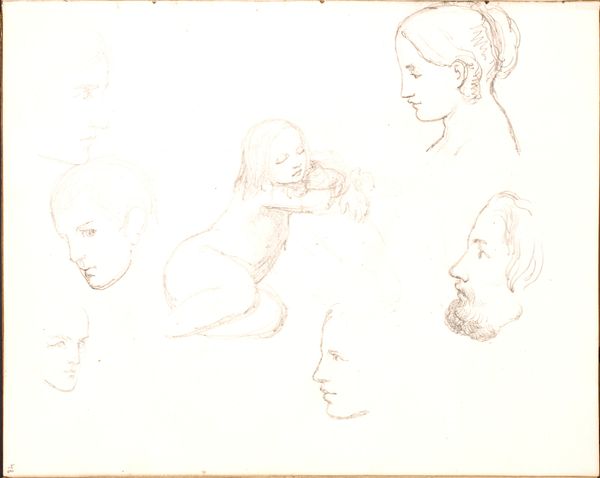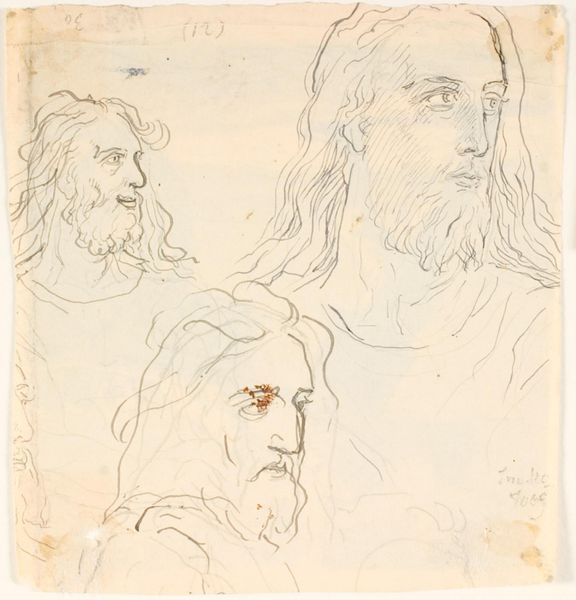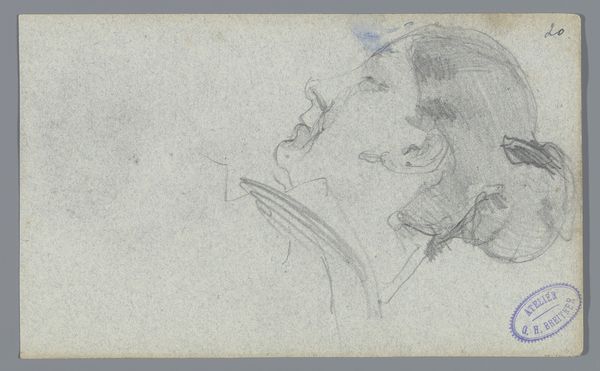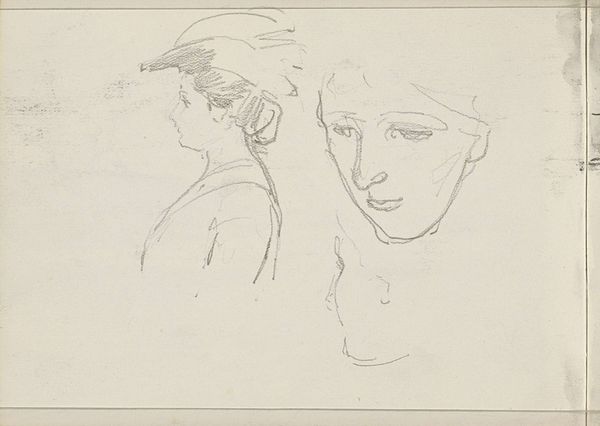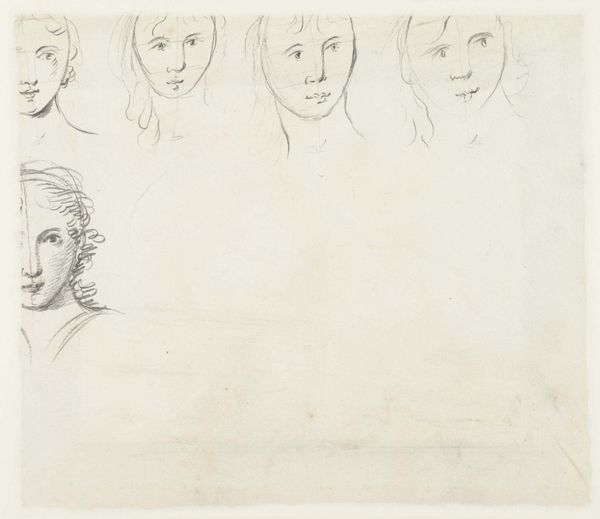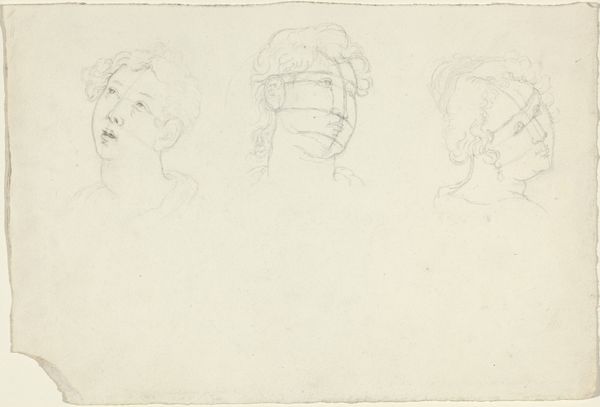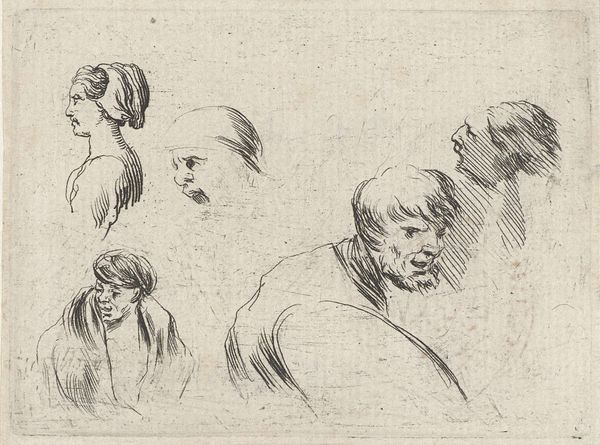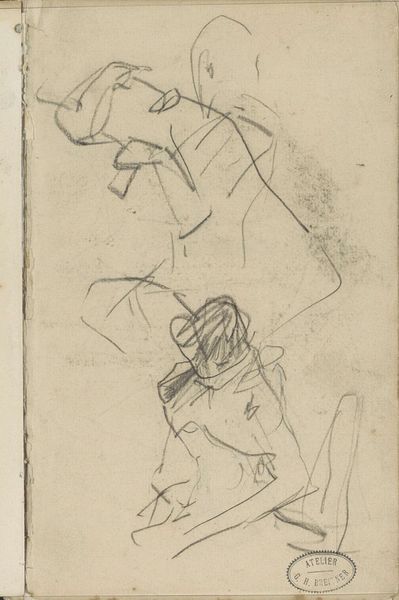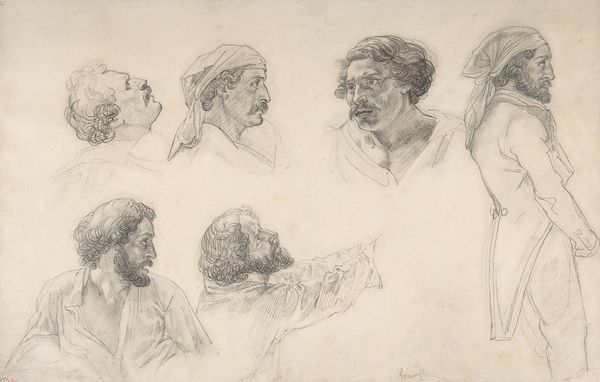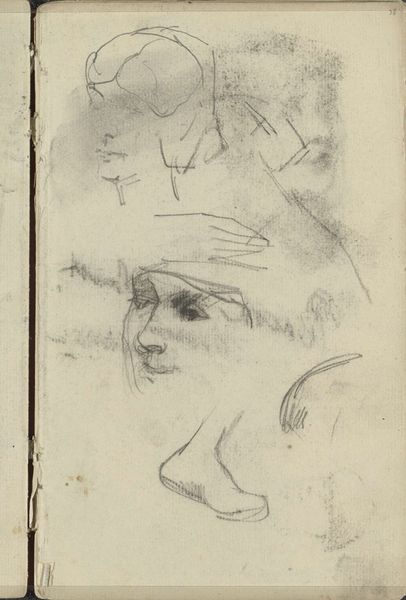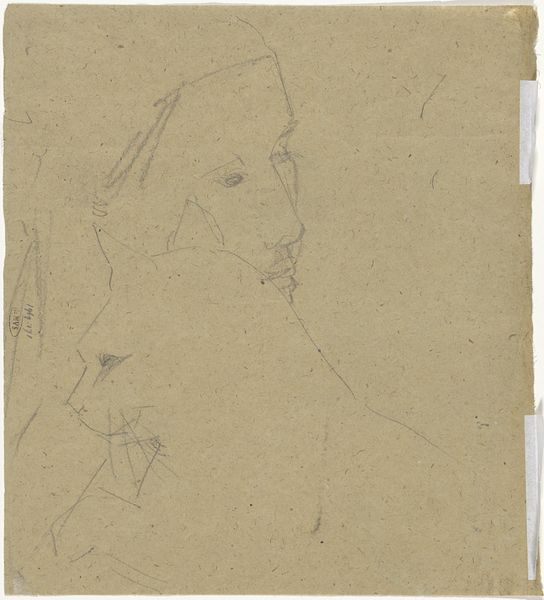
Tre studier af drejede ansigter. Et kvindeansigt i trekvart profil t.h. Et mandehoved set bagfra. Et mindre mandehoved set skråt nedefra 1743 - 1809
0:00
0:00
drawing, pencil
#
portrait
#
drawing
#
pencil sketch
#
classical-realism
#
pencil
#
portrait drawing
#
academic-art
Dimensions: 219 mm (height) x 225 mm (width) (bladmaal)
Editor: This pencil sketch by Nicolai Abildgaard, "Three Studies of Turned Faces," feels so delicate, like a whispered secret from the late 18th century. What does this collection of faces suggest to you? Curator: For me, this drawing illuminates the rigorous academic training prevalent during that period. Abildgaard, deeply influenced by classical ideals, used these studies, particularly the profile of a woman and the head seen from behind, to understand human form in relation to art’s role in society. Think about the French Academy; these kinds of preparatory studies were crucial. Why do you think artists spent so much time on such sketches? Editor: I suppose they were trying to master anatomy and form, maybe hoping to capture an idealized version of the human. Curator: Precisely! This wasn’t just about representation; it was about conveying virtue, reason, and the values associated with classical antiquity, serving the social function of instructing the public through idealized imagery. These studies often served as references for larger history paintings or allegorical works, reinforcing prevailing social and political structures through art. Editor: So these weren't just exercises in skill, but also exercises in reinforcing particular ideologies? Curator: Absolutely. Consider the institutional backing. Royal academies actively promoted such imagery because it aligned with the era's power structures. The "ideal" was politically charged. This explains the limited range of body types and expressions you might observe across this period of art, Abildgaard was not just drawing faces. He was actively involved in shaping a visual culture. Editor: That's fascinating. I always thought of them as simple figure studies, but I see how they’re tied to something bigger now. Thanks! Curator: Indeed! Recognizing the context reframes how we view this subtle, delicate drawing, doesn't it?
Comments
No comments
Be the first to comment and join the conversation on the ultimate creative platform.
